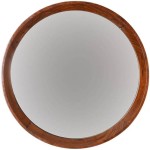How to Mirror Your Mac on a Samsung TV
Mirroring a Mac's display on a Samsung TV offers a larger viewing experience for various activities, from presentations and entertainment to gaming and casual browsing. Several methods facilitate this screen mirroring, each catering to different setups and technical capabilities.
Using AirPlay 2
For Macs running macOS Mojave (10.14.5) or later and compatible Samsung TVs (2018 or later models generally support AirPlay 2), AirPlay 2 offers a seamless wireless mirroring solution.
Key Points:
- Ensure both the Mac and the Samsung TV are connected to the same Wi-Fi network.
- Click the Control Center icon in the Mac's menu bar.
- Click "Screen Mirroring".
- Select the Samsung TV from the list of available devices.
- If prompted, enter the AirPlay code displayed on the Samsung TV.
- To stop mirroring, return to the Screen Mirroring menu and select "Stop Mirroring".
Using an HDMI Cable
A wired connection using an HDMI cable provides a reliable, low-latency mirroring experience, ideal for activities requiring precise timing, like gaming or using professional video editing software. This method, however, requires a physical connection and may limit mobility.
Key Points:
- Connect one end of an HDMI cable to the HDMI port on the Mac (may require an adapter depending on the Mac model).
- Connect the other end of the HDMI cable to an available HDMI port on the Samsung TV.
- On the Samsung TV, select the correct HDMI input source using the remote control or source button.
- On the Mac, open System Preferences and navigate to Displays.
- Select the Arrangement tab and ensure "Mirror Displays" is checked.
- Adjust the resolution and refresh rate as needed within the Display settings.
Mirroring Specific Applications with AirPlay
Rather than mirroring the entire Mac screen, AirPlay allows mirroring individual applications, offering greater control over what is displayed on the Samsung TV. This can be useful for presentations or sharing specific content while keeping other applications private on the Mac.
Key Points:
- Ensure both devices are on the same Wi-Fi network.
- In the application you wish to mirror, look for the AirPlay icon. This is often located within the playback controls for video or audio content, or in the sharing options for other applications.
- Click the AirPlay icon and select your Samsung TV from the list of available devices.
- To stop mirroring the application, click the AirPlay icon again and select "Turn AirPlay Off".
Troubleshooting Common Issues
Sometimes, technical hiccups can prevent successful mirroring. Here are a few troubleshooting steps to address common problems:
Key Points:
- Network Connectivity: Verify both devices are connected to the same Wi-Fi network and that the network is functioning correctly. Try restarting the router if needed.
- Software Updates: Ensure both the Mac's operating system and the Samsung TV's firmware are up to date. Outdated software can sometimes cause compatibility issues.
- Firewall Settings: Check the Mac's firewall settings to ensure it's not blocking AirPlay connections.
- Restart Devices: A simple restart of both the Mac and the Samsung TV can often resolve minor software glitches.
- HDMI Cable and Adapters: If using an HDMI cable, try a different cable or adapter to rule out hardware problems. Ensure the cable is securely connected to both devices.
- TV Input Source: Double-check that the correct HDMI input source is selected on the Samsung TV.
- AirPlay Compatibility: Confirm that the Samsung TV model supports AirPlay 2. Older models may not be compatible.
Choosing the Right Mirroring Method
The best mirroring method depends on individual needs. AirPlay 2 offers wireless convenience, while HDMI provides a more robust, low-latency connection. Consider the specific use case and available hardware when selecting the appropriate method.
Key Points:
- Wireless Convenience (AirPlay 2): Ideal for casual browsing, presentations, and sharing photos or videos.
- Low-Latency Performance (HDMI): Best for gaming, video editing, or other activities requiring precise timing.
- Application-Specific Mirroring (AirPlay): Useful for sharing specific content while maintaining privacy on the Mac's display.
By understanding these different methods and troubleshooting tips, users can effectively mirror their Mac's display on a Samsung TV for a variety of purposes.

How To Screen Mirror Mac Samsung Tv Step By Guide

How To Mirror Mac Screen Samsung Tv Without Apple

How To Mirror A Mac Smart Tv

How To Connect Mac Samsung Smart Tv A Quick Solution

6 Ways How To Mirror Your Macbook Samsung Tv

How To Mirror A Mac Smart Tv

How To Mirror Macbook Samsung Smart Tv

How To Screen Mirror Mac Samsung Tv Step By Guide

How To Mirror Macbook Samsung Smart Tv

How To Airplay Mirror Mac Samsung Smart Tv Without Apple Redmond Pie








